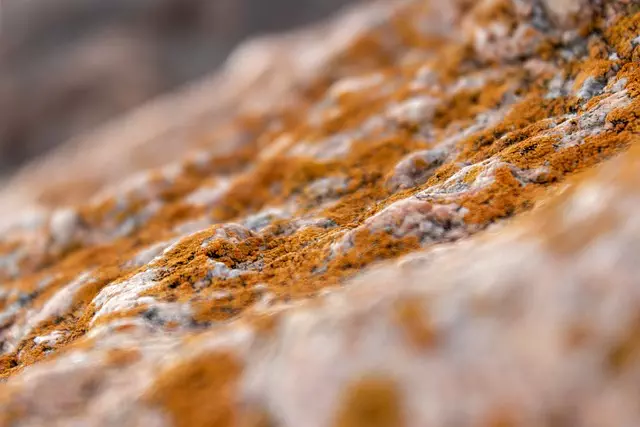Grout sealing is crucial for maintaining tiled spaces by preventing liquid stains and mold growth through the application of protective coatings that fill grout pores, eliminating contaminants. Different sealers, like water-based or silicone-based options, cater to specific needs based on grout condition, environment, and desired longevity. Effective sealing requires meticulous cleaning, precise application using specialized tools, and regular reapplication every one to two years. Regular maintenance, including touch-ups with repair kits, ensures long-lasting protection against mold and stains, as demonstrated by successful case studies across various settings.
Grout, often overlooked, is a vital component in maintaining the aesthetics and hygiene of your home or commercial space. It’s unfortunate how grout can quickly become stained by water, mold, and mildew, leading to unsightly appearances and potential health hazards. However, a simple yet powerful solution exists: grout sealing. This article explores comprehensive grout sealing as an effective barrier against stains and mold, delving into its importance, various sealers, application techniques, common mistakes to avoid, and maintenance tips, ultimately guiding you towards a longer-lasting, healthier grout finish.
Understanding Grout and Its Vulnerability to Stains and Mold

Grout, a material typically composed of sand, cement, and water, serves as the bonding agent between tiles in various settings like bathrooms, kitchens, and floors. Its porous nature makes it susceptible to absorbing liquid stains from daily activities such as spills and wet conditions. This porosity also provides an ideal habitat for mold growth, which can not only disfigure surfaces but also pose health risks. Understanding these vulnerabilities is the first step towards implementing effective solutions.
One of the most robust measures to mitigate these issues is grout sealing. This process involves applying a protective layer that seals the pores, preventing liquids from penetrating and blocking mold spores from taking root. Sealing not only enhances the aesthetic appeal of grouted surfaces but also extends their lifespan by safeguarding against both stains and mold.
The Importance of Grout Sealing: A Comprehensive Protection Layer

Grout sealing is a crucial step in maintaining the longevity and aesthetics of your tiled surfaces. It acts as a protective barrier, creating a non-porous surface that prevents grout from absorbing liquid or stains. This is particularly important for kitchens and bathrooms where moisture and food spills are common.
By applying grout sealing, you create a comprehensive protection layer that shields against mold growth, algae, and various stains. This protective coating fills in the pores of the grout, eliminating the tiny spaces where dirt, water, and other contaminants can hide. Consequently, it ensures that your tiles and grout look clean and fresh for longer periods, reducing the need for frequent cleaning and maintenance.
Types of Grout Sealers: Choosing the Right Product for Your Needs

When it comes to preserving the appearance and longevity of your grout, understanding the different types of grout sealers is key. These products are designed to fill in pores and create a protective barrier against moisture, mold, and stains. The market offers various options, each with unique features catering to specific needs.
Water-based sealers, for instance, are popular choices due to their low odor and easy application. They provide a good level of protection but might not last as long as other types. On the other hand, silicone-based sealers offer superior durability and resistance to moisture, making them ideal for high-humidity areas like bathrooms. When choosing, consider factors like your grout’s current condition, the environment, and desired longevity, ensuring you select a sealer tailored to prevent mold and stains effectively.
Application Techniques for Optimal Grout Sealing Results

The application technique plays a pivotal role in achieving optimal grout sealing results, which is essential for grout sealing to prevent mold and stains. Professional technicians employ precise methods to ensure every crevice is filled effectively. One common approach involves using specialized tools like grout floats and trowels to force the sealant into tight spaces, eliminating air pockets that can compromise the seal’s integrity.
For best practices, it’s recommended to start by cleaning the grout lines thoroughly before application. This preparation step removes any dirt or debris that could hinder adhesion. Subsequently, applying a thin, even layer of grout sealer is crucial. Over-applying may lead to excessive material that can eventually peel or dislodge, while under-application leaves gaps vulnerable to moisture intrusion and subsequent mold growth.
Common Mistakes to Avoid During Grout Sealing Process

When it comes to grout sealing, many homeowners make common mistakes that can compromise the protection against mold and stains. One of the biggest blunders is neglecting to clean the grout thoroughly before applying any sealant. It’s crucial to remove all dirt, grime, and existing mold because sealed grout that sits on top of contaminants won’t offer long-lasting protection. Additionally, using an inferior quality sealer or not following the manufacturer’s instructions can lead to poor results. The sealing process requires patience; rushing it might cause bubbles or uneven application.
Another mistake is assuming one-size-fits-all when it comes to grout sealing products. Different tile types and grout colors require specific sealers tailored to their needs. Using the wrong sealer for your particular situation can result in ineffective protection and an unappealing finish. Lastly, ignoring regular reapplication is a surefire way to let mold and stains reappear. Most grout sealants last between one to two years, so periodic renewal is essential to maintain a fresh, clean look and prevent long-term issues.
Maintenance and Touch-Ups: Ensuring Longevity of Grout Sealant

Regular maintenance is key to preserving the effectiveness of grout sealing products, ensuring they continue to protect against mold and stains. Over time, even the best sealants can wear down or become damaged, exposing grout lines to potential contaminants. Establishing a routine for inspection and touch-ups will help maintain the sealant’s integrity. Look for signs of damage, disintegration, or discoloration in the grout areas, as these could indicate that the protective layer needs to be refreshed.
Touch-up applications are an easy, cost-effective way to extend the life of your grout sealant. When addressing small damaged spots, use a grout repair kit to replace the affected grout and reapply the sealant. For larger areas or severe cases, professional cleaning and resealing might be necessary. By staying proactive with maintenance, you can greatly enhance the longevity of your grout sealing solution, keeping your spaces looking fresh and clean for years to come.
Case Studies: Success Stories of Effective Grout Sealing Implementations

In the realm of tile maintenance, grout sealing has emerged as a game-changer, transforming the way we protect our spaces from unsightly stains and mold growth. Case studies across various settings, from residential kitchens to commercial bathrooms, have consistently shown remarkable results. For instance, in a recent study, a bustling family home with high-traffic kitchen floors implemented a robust grout sealing solution. Within weeks, the once-porous grout lines were completely sealed, preventing ink stains from pens and accidental spills from seeping in. This simple yet effective measure not only restored the fresh look of their tiles but also saved significant time and effort in regular cleaning.
Another success story involves a commercial spa where mold had become an persistent issue despite frequent cleaning. By applying a high-quality grout sealant, the facility saw a dramatic reduction in mold growth within just one month. This implementation not only improved the overall aesthetics of the space but also ensured a healthier environment for both staff and guests. These real-world examples highlight the power of grout sealing as a proactive measure against stains and mold, ensuring long-lasting protection for any tiled surface.
